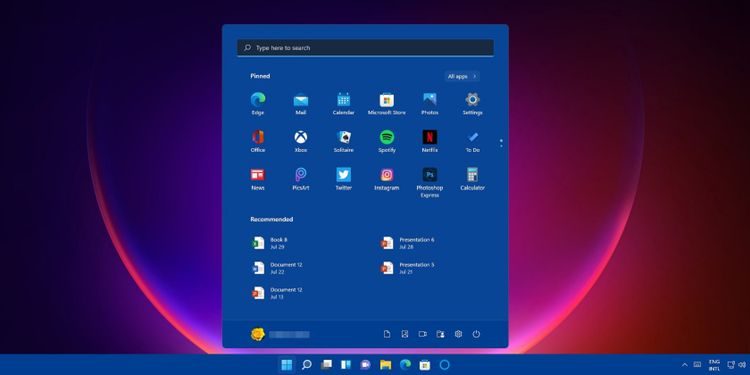In this guide we have mentioned to Fix Memory Issues on Windows 11. To be honest, I enjoy Windows 11 for a variety of amazing features, a new design language, and a smooth user interface. However, Windows 11 has a few flaws that bring back memories of Windows 10. For example, Windows 11 occasionally displays a dark screen after an update, which makes the experience unpleasant, especially for people upgrading from Windows 10. Another set of RAM-related issues has emerged on Windows 11, making consumers regret their decision to upgrade to Windows 11. So, Memory issues such as high RAM utilization, memory leaks, and low memory plague Windows 11 users. So here’s a one-stop guide on resolving memory issues in Windows 11. If you are experiencing RAM problems on Windows 11, please see our tutorial below.
Also Read:Fix Weather Widget Not Showing On Taskbar Windows 11
How to Fix Memory Issues in Windows 11(2022)
We’ve included workarounds for several RAM difficulties on Windows 11 in this tutorial. We’ve included all the workarounds and tools to better understand the memory problem, from memory leaks on Windows 11 to inaccurate RAM detection. You can move to any section of the table below by expanding it.
On Windows 11, how do you check for memory leaks?
While Microsoft has resolved the memory leak issue in File Explorer on Windows 11, you can check to see if it still affects you and, if so, follow the steps below to resolve the issue. On Windows 11, here’s how to check for memory leaks.
- To access the Run window in Windows 11, press the Windows + R keyboard shortcut. Enter the command resmon here. So, The Resource Monitor will appear.
- Next, go to the “Memory” page and check out the “Standby” memory. Make sure all apps and windows are closed. The Standby memory should clear up and the memory use should decrease if no apps are active and File Explorer is closed. If the Standby memory remains high and Windows 11 does not release the memory, you are experiencing a memory leak on Windows 11.
Also Read:Fix Weather Widget Not Showing On Taskbar Windows 11
To fix a memory leak, close File Explorer.
File Explorer on Windows 11 has been known to cause memory leaks in the past. So, in order to release the memory kept by the system, we must first conduct some basic actions. The steps are as follows.
- To resolve the memory leak issue in Windows 11, shutdown all File Explorer windows. Simply right-click the File Explorer icon in the Taskbar and select “Close all windows” from the drop-down menu.
- Next, launch the Task Manager by pressing “Ctrl + Shift + Esc.” Then look for “Windows Explorer” under the “Processes” tab. Right-click it and select “Restart” from the menu. This will restart Windows Explorer, freeing up additional RAM on Windows 11.
Also Read:Steps To Perform A Clean Boot On Windows 11 ( Simplified)
Change the Folder Options in File Explorer
Some users claim that launching folder windows in a different process fixes the memory leak problem in Windows 11. See if the steps below help you solve the problem.
- To open the File Explorer, press “Windows + E.” Open “Options” by clicking the 3-dot menu on the top menu bar.
- Scroll down to the “Advanced options” section of the “View” tab. Turn on the “Launch folder windows in a separate process” checkbox.
- Finally, press “OK” to restart your computer. Windows 11 should no longer allocate an unexpected amount of memory to File Explorer.
Also Read: How To Disable Modern Standby In Windows 10 And Windows 11
Turn off startup programs
Disabling unneeded startup apps on Windows 11 frees up a lot of resources and reduces high RAM utilization. You should always disable superfluous startup programs for optimal maintenance. Here’s how to go about it.
- To open the Task Manager, press “Ctrl + Shift + Esc.” Go to the “Startup” tab now.
- Look for any programs that are no longer required after logging in. Disable the software immediately by right-clicking on it. Make sure that any unidentified programs are turned off. Now restart your computer, and a large amount of RAM should be available.
Boost Virtual Memory
You can increase the size of virtual memory, often known as “swap,” if you have insufficient physical memory. When your PC’s memory is low, Windows 11 will use some sectors of the hard disc as RAM. This will greatly assist you in combating Windows 11’s high RAM utilization.
- First, press the Windows key and type “advanced system” into the search box. “View advanced system settings” should now be open.
- In the “System Properties” box, go to the “Performance” section and select “Settings.”
- In the following box, click “Change” under “Virtual memory” on the “Advanced” tab.
- On the top right, uncheck the “Automatically manage paging file size for all discs” selection and select “Custom size.” Enter what is advised below in the “Initial size” field. For example, I’ve set the initial size at “1912.” In the “Maximum size” field, type 4096. This will give your Windows 11 PC an extra 4GB of virtual RAM. Now select Set -> OK.
Note that the Maximum size can be up to three times the physical memory. You can set up to 24GB (24576MB) of virtual memory on a PC with 8GB of actual RAM.
- Restart the computer, and the low RAM issue on Windows 11 will resolve.
Also Read:How To Turn On Or Off Auto HDR In Windows 11?
Fix Memory Problems in Windows 11
If Windows 11 keeps crashing or freezing for no apparent reason, it’s most likely due to bad RAM. Windows 11 includes a built-in Windows Memory Diagnostic tool that runs a series of simple and advanced checks to determine the RAM’s reliability. We’ll utilize this tool to look for probable memory problems.
- Press the Windows key once and type “tools” into the search box. Open the search result for “Windows Tools.”
- Launch the “Windows Memory Diagnostic” program.
- On Windows 11, it will prompt you to restart your computer to check for RAM problems. “Restart now” should be selected.
- You will now be sent to the Windows Memory Diagnostics Tool screen, where the Standard test will begin, which will check for all BASIC tests, including INVC, MATS+, SCHCKR (cache enabled), LRAND, Stride6 (cache enabled), CHCKR3, and more.
- If you wish to run a more advanced RAM test, such as Extended, hit the “F1” key and select the required test. To switch between settings, press “Tab,” then “F10” to save your changes.
- Your computer will restart automatically after the memory test is completed. To view the test results, log in to your computer. Search for “Event Viewer” by pressing the Windows key once. Open it now.
- Open the “System” logs after expanding “Windows Logs.” Scroll down to “MemoryDiagnostics-Results” and click it.
- Examine the outcome by opening it. It claims there are no faults in your memory, you should hunt for the root reason elsewhere. If the tool discovers a problem, you may need to replace the RAM.
- If the default Windows Memory Diagnostic Tool does not meet your needs, try the MemTest86 software (free), which is the top contender in our list of the best tools for stress testing RAM. It has over 13 algorithms that check RAM for all conceivable hardware problems.
Also Read: Enable Or Disable Open Xbox Game Bar Using Game Controller In Windows 11
Final Thoughts
These are the methods for resolving memory issues in Windows 11. A memory leak or background processes chewing up an excessive quantity of RAM could be the cause of your high RAM use. We’ve given several solutions for this problem; simply follow the instructions above to find an appropriate answer. That concludes our contribution.

































